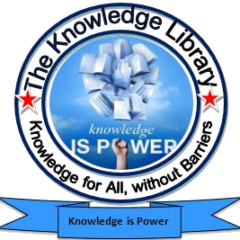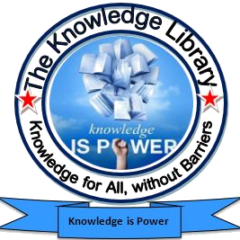1. If the conditioned stimulus is presented many times without reinforcement, we can expect
(A) an increase in stimulus generalization
(B) the strength of the UR to increase
(C) an increase in response generalization
(D) extinction to occur
Answer: (D)
2. Punishment is most often effective in suppressing behaviour when it is
(A) immediate, consistent, and intense
(B) delayed, consistent, and mild.
(C)immediate, consistent, and mild
(D) delayed, inconsistent, and intense
Answer: (A)
3. The greatest degree of resistance to extinction is typically caused by a ————schedule of reinforcement.
(A)variable interval (B) variable ratio
(C) fixed interval (D) fixed ratio
Answer: (A)
4. The first grade teacher gives students stickers when they perform well. If they earn five stickers in one day they are exempt from homework. The stickers in this example could also be called
(A) tokens (B) primary reinforcers
(C) generalized reinforcers (D) prepotent responses
Answer: (A)
5. A punisher can be
(A) the onset o fan unpleasant event
(B) the removal of a positive state of affairs
(C) any consequences that reduces the occurrence of a behaviour
(D) a positive reinforcer
Answer: (C)
6. When will behavior be most motivated?
(A) Reinforcement has bee frequent in the past.
(B) Deprivation and drive is high.
(C) High desirability of reward.
(D) All of the above.
Answer: (D)
7. A visual disorder in which reading is impaired by a perceptual confusion of letters is called
(A) Dyslexia (B) Dysosmia
(C) Dysgensia (D) Paranoia
Answer: (A)
8. Which of the following is an example of a Specific Learning Disability?
(A) Mental Retardation (B)Dyslexia
(C) Autism spectrum disorder (D) ADHD
Answer: (B)
9. In learning disabilities, the name for mathematical disorder is:
(A) Dyspraxia (B) Dyslexia
(C) Dyscalculia (D) Dysphasia .
Answer: (C)
10. Learning can be defined as
(A) a change in behaviour
(B) an observable change in behaviour resulting from experiences in the environment
(C) a permanent change in behaviour resulting form experience
(D) a relatively permanent acquisition of information through study
Answer: (B)
11. Ivan Pavlov is important in psychology because he
(A) discovered the principles of classical conditioning
(B) discovered the principles of operant conditioning
(C) discovered the principles of observational learning
(D) none of the above
Answer: (A)
12. —————— is a consequence which increases the likelihood that the preceding behaviour will occur again.
(A) punishment
(B) reinforcement
(C) both reinforcement and punishment
(D) none of the above
Answer: (B)
13. In reinforcement, the reinforcer follows every correct response
(A) Intermittent (B)Partial
(C)Negative (D) Continuous
Answer: (D)
14. In Pavlov’s experiments with dogs, salivation was the
(A) conditioned response
(B) unconditioned response
(C) conditioned stimulus
(D) unconditioned stimulus
Answer: (B)
15. The presentation of an aversive stimulus or the removal of a positive stimulus are both examples of
(A) negative reinforcement (B) punishment
(C) positive reinforcement (D) secondary reinforcement
Answer: (A)
16. A gifted child
(A) always has a very high IQ
(B) is always an exceptional child
(C) always performs difficult mental tasks
(D) always asktoo many questions
Answer: (B)
17. Which one of the following is ‘not’a characteristic oflanguage development
(A) Semanticity (B) Productivity
(C) Tactfulness (D) Displacement
Answer: (D)
18. Which one of the following is ‘not’ a characteristic of gifted child
(A) Transferring skills to new problems
(B) Higher order problem solving and decision making
(C) Extraverted
(D) Non-conformism
Answer: (C)
19. Agifted child
(A) high intelligence, high creativity and high motivation ‘
(B) average intelligence, high creativity and high motivation
(C)high intelligence, average creativity and high motivation
(D) high intelligence, high creativity and average motivation
Answer: (A)
20. A moderately retarded child has IQ:
(A)50-70 (B) below 35
(C)35-49 (D) 70-85
Answer: (C)
21. The skill of using language in social context is
(A) Semantics (B) Pragmatics
(C) Syntax (D) Generativity
Answer: (B)
22. Adults modify their language when communicating with children in order to support the child. This kind of supporting is called
(A) Scaffolding (B)Helping
(C) Adjusting (D) Identifying
Answer: (A)
23. Which of the following statements about punishment is FALSE?
(A) Punishment teaches new responses
(B) Punishment temporarily suppresses a response
(C) Punishment may permanently suppress a response
(D) Punishment applies an aversive event.
Answer: (A)
24. Operant conditioning was studied by
(A) Pavlov (B) Skinner
(C) Freud (D) Maslow
Answer: (B)
25. Which of the following mightserve as a secondary reinforce?
(A) Sex (B) Grades
(C)Pain relieving drug (D) Food
Answer: (B)
26. In a classic experiment, “Little Albert,” a very young boy, was conditioned to be afraid of a rat. He also became fearful of white furry rabbits and bearded men. This is an example of (A) spontaneous recovery (B) higher order conditioning
(C) extinction (D) stimulus generalization
Answer: (D)
27. Negative reinforcement —————– responding; punishment ————- responding.
(A) increases; increases (B) decreases; decreases
(C) increases; decreases (D) decreases; increases
Answer: (C)
28. ————— occurs when making a response removes an unpleasant event.
(A) Positive reinforcement (B) Negative reinforcement
(C) Extinction (D) Punishment
Answer: (B)
29. Negative reinforcement and punishment
(A) have opposite effects on behaviour
(B) are different terms for the same procedures
(C) have the same effect on behaviour
(D) are not very effective in changing behaviour
Answer: (A)
30. To extinguish classical conditioning. You must break the association between which pair?
(A) C Sand CR (B) US and UR
(C) U Sand CR (D) U Rand CR
Answer: (A)
31. A stimulus or event, when its termination is contingent to a response increases the likelihood of the occurrence of the response, is a
(A) Primary Reinforcer (B) Negative Reinforcer
(C) Secondary Reinforcer (D) Positive Reinforcer
Answer: (B)
32. Creativity is measured on the dimension of
(A) originality (B) applicability
(C)flexibility (D) all of the above
Answer: (D)
33. Learning that is affected by consequences is called
(A) Behavioural self management (B) Operant conditioning
(C) Self-regulated learning (D) Classical conditioning
Answer: (B)
34. Identify the factor which distracts us from the solving a problem
(A) Flexibility (B) Divergent Thinking
(C) Set (D) Goal
Answer: (C)
35. Intelligence was believed to be distributed among people:
(A) Uniformly (B) Normally
(C) Widely (D) Selectively
Answer: (B)
36. A view that”anything can be taught at any stage of development” was proposed by:
(A)Jean Piaget (B)D. Ausubel
(C)J. Bruner (D)B.F. Skinner
Answer: (C)
37. A student is working hard and solving mathematical problems as his father has promised to give him a motorcycle if the gets good marks. This means that the student has (A) intrinsic motivation (B) extrinsić motivation
(C) mathematical motivation (D) None of the above
Answer: (B)


 Users Today : 534
Users Today : 534 Total views : 476742
Total views : 476742